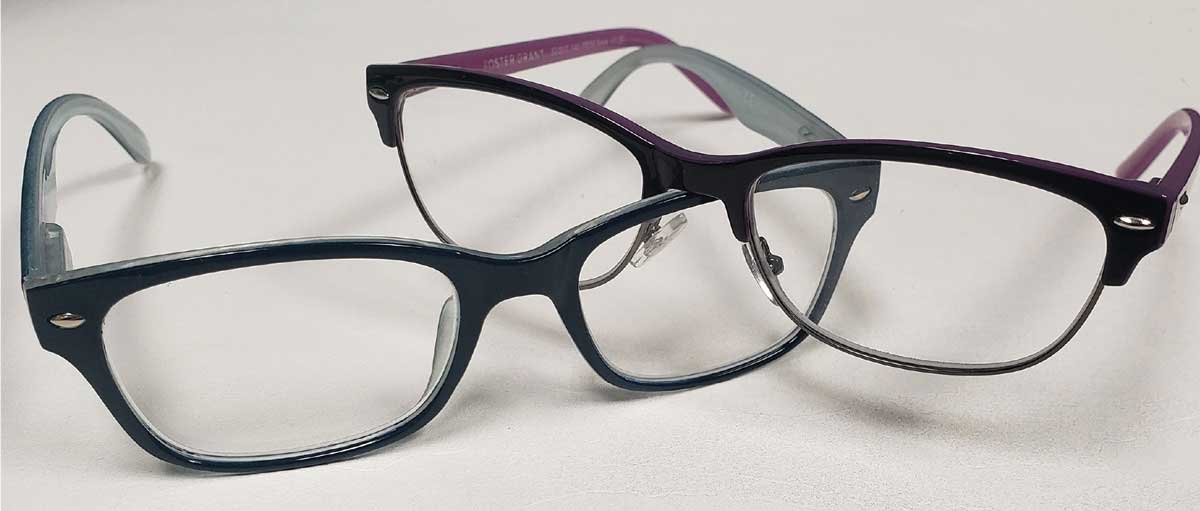 |
There is a rule of thumb that a former colleague and mentor used to say all the time: “If you’ve seen one brain injury patient, you’ve seen… one brain injury patient.” She was referring to the fact that these patients can each have significantly different symptoms, based on a multitude of factors, including age, location and extent of the injury, type of injury and time since the injury. Among the more common complaints are double vision, field loss, trouble focusing on reading material and fatigue while reading. All fall within the purview of the optometrist tasked with providing visual rehab and correction.
Regardless of a patient’s symptoms and diagnoses, there is a first-line brain injury management method that is as simple as it is effective. It is so logical that it is often overlooked by doctors. This installment will cover the two-pair glasses approach and how to go about executing it in practice.
Welcome, Dr. Schnell!I am thrilled to introduce Review of Optometry readers to a longtime colleague and good friend of mine, Dr. Pam Schnell. When I first met Pam 10 years ago during her interview at SCO, it was pretty obvious right off the bat that we were two peas in a pod. She is the Jane of all trades, and I look forward to working with her as Focus on Refraction’s latest co-columnist. Please join me in welcoming Dr. Schnell to the team! —Dr. Taub |
Domino Effect
Since brain injuries typically occur in older populations, these patients generally use bifocals, either a flat-top or a progressive addition lens (PAL). Even though they may have been using their multifocal lenses for upward of 30 to 40 years, the ability to focus the eyes on the right place in the X, Y and Z axes becomes a challenge when the brain is injured. Vergence, accommodation and ocular motility have all been shown to be impacted following a brain injury.1 As these three systems are primarily responsible for making sure that the eyes get to where they need to go, it is not a leap to anticipate trouble when patients are using the small reading areas in both bifocals and PALs.
Don’t forget the role played by the rest of the body, of course. As numerous parts of the body can be impacted by the injury, so too can be the ability to support and point the head at the right place in space. If a patient is slumped off to one side, it is more than likely that they are not looking through the appropriate place in the lenses.
Also keep in mind that field cuts are a common finding related to a brain injury. If a piece of the field is missing, so is the patient’s ability to use the lens. For some patients, it is already challenging enough to use bifocals or PALs, so imagine now that the little window is even smaller and that some of the distance, channel or reading portions of the PAL are gone. Add to this a potential finding of impaired cognition, and the issues increase.
Don’t Overthink It
The first step for these patients is to switch them from a multifocal to two pairs of glasses, one for distance and one for near. Having a larger area to see through is a huge relief to the patient and their over-taxed, healing brains. As an aside, we will often recommend a single-vision pair of reading glasses for many of our presbyopic patients who are avid readers.
Yes, it is an issue that patients are resistant to using separate distance and near vision glasses, but this can be overcome with proper education for the patient and their caregiver. After explaining why this is necessary in the treatment process and how it will aid sensory and motor functioning, the typical patient response is usually, “That makes so much sense!”
 |
| The two-pair glasses approach can make a world of difference in the healing process for a brain injury patient. |
One of the benefits, apart from the larger viewing area, is the ability to offer different treatments for distance and near. This is most obvious when prescribing prism to alleviate diplopia. The ability to use different amounts of prism, typically issued using a Fresnel, is important and necessary. A Fresnel is used as a prism entry point since the hope is that it will be a temporary measure and that the amount needed may decrease throughout the healing process. Once the amount is stable, we can then consider grinding in the prism. It is easier to grind in prism and for the patient to adapt to it with a single-vision lens.
In addition to patients with a brain injury, those suffering from a neurological condition can also benefit from the two-pair approach. Conditions such as multiple sclerosis, Parkinson’s disease and ALS impact muscle function and control throughout the body. While it is easier to compensate for large-muscle issues as there is more room for error, this is not true for the smaller muscles that control eye movements. Having more room for error in the form of larger viewing areas is a simple, effective strategy for these patients.
As part of the Vision Therapy and Rehabilitation service at Southern College of Optometry, I (Dr. Taub) see patients in rehabilitation facilities. While the most common patient is one who suffers from a brain injury, I also see those needing physical and occupational therapy related to various neuromuscular conditions like those discussed previously.
Recently, I saw patients with multiple sclerosis and Friedreich’s ataxia. Both patients complained about not being able to concentrate when reading. Not surprisingly, both were also wearing PALs. As you might have guessed, I suggested that the next time they visit their regular eye doctor, they ask about the two-pair approach. Even though there was nothing that could be done on my part for their immediate issues, with the recommended approach, they are set up for future visual success.
On the opposite end of the spectrum from patients who are unable to control their head and eye movements are patients who have limited mobility. Consider issues related to using a multifocal contact lens if you can’t point your face at the object that you wish to view or tilt your head to enter a different portion of the lens. Patients who have experienced a traumatic event such as a car accident, or even those undergoing major cervical spinal surgery, may be forced to wear a halo as part of the healing process. Since limiting head movement is the point of the halo, this can have a negative impact on the patient’s ability to have clear, single binocular vision. Even after the halo is removed, mobility may still be reduced in some cases.
Issuing two pairs of glasses is the solution in these situations. Don’t forget that some patients who could previously compensate for poor binocularity may now be subject to complaints of double vision post-injury, so using two pairs also allows for easier placement of Fresnel prism.
Takeaways
The two-pair glasses treatment method is so obvious and simple that doctors often overlook it as an option. We all have patients in our offices who have suffered strokes or who struggle with a neurological condition. Consider using this approach proactively to help move the healing process along and reactively when patients are unable to use their multifocals effectively or efficiently.
Dr. Taub is a professor, chief of the Vision Therapy and Rehabilitation service and co-supervisor of the Vision Therapy and Pediatrics residency at Southern College of Optometry (SCO) in Memphis. He specializes in vision therapy, pediatrics and brain injury.
Dr. Schnell is an associate professor at SCO and teaches courses on ocular motility and vision therapy. She works in the pediatric and vision therapy clinics and is co-supervisor of the Vision Therapy and Pediatrics residency. Her clinical interests include infant and toddler eye care, vision therapy, visual development and the treatment and management of special populations. They have no financial interests to disclose.
1. Suhr CL, Shust M, Prasad R, et al. Recognizing TBI-related vision disorders. Rev Optom. 2015;152(12):56-65. |

